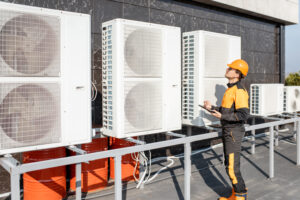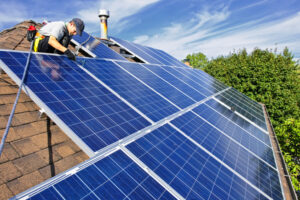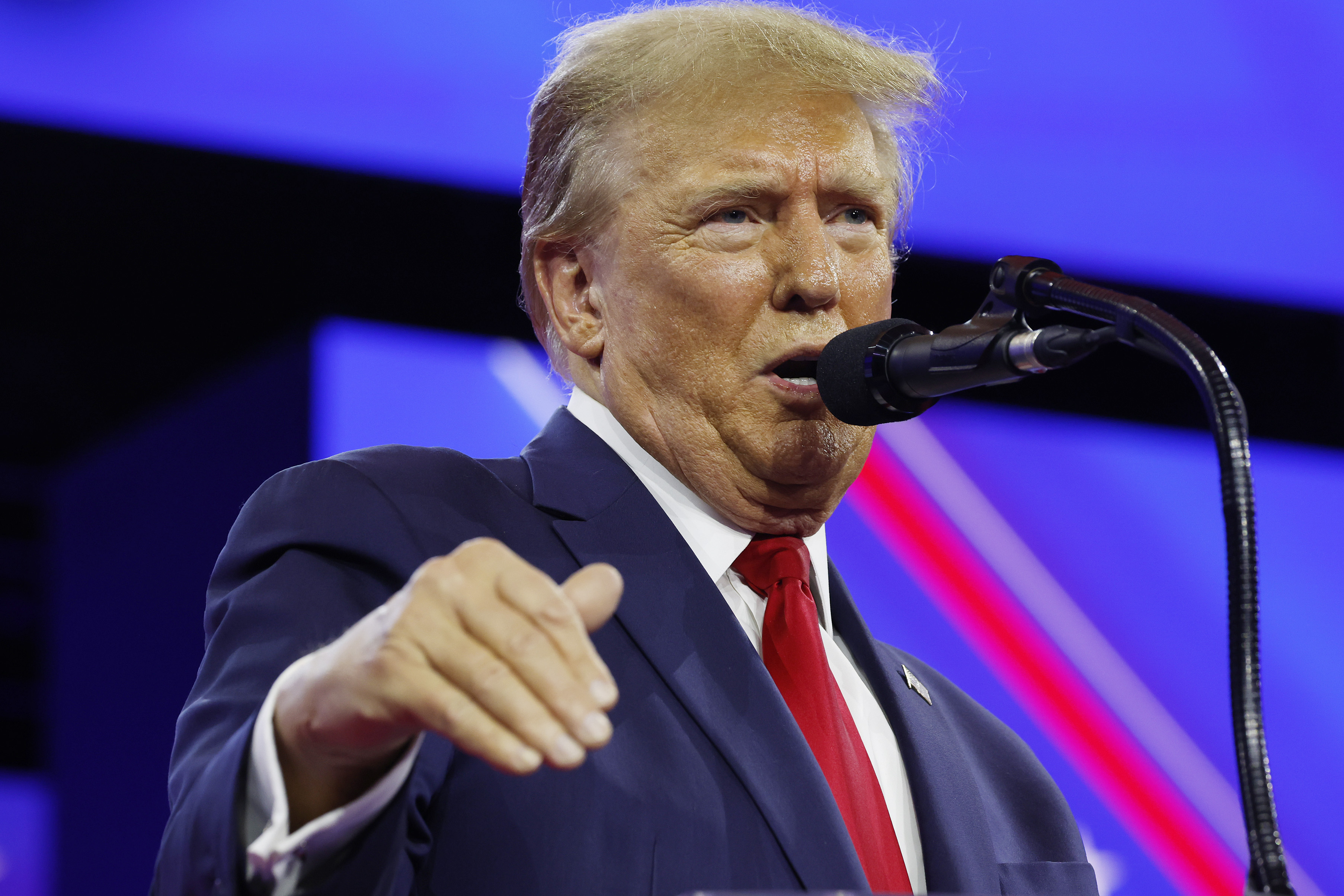Inflation Reduction Act: What Every Real Estate Investor Should Know

Table of Contents
On Sunday morning, the U.S. Senate passed the Inflation Reduction Act (H.R. 5376). Assuming the House passes an identical bill this Friday (and Nancy Pelosi says they will), taxpayers have a few new tax increases and scores of green tax incentives to sort through.
Tax increases in the bill
Here’s some good news: if you’re a small business owner or real estate investor, the Inflation Reduction Act probably doesn’t raise your taxes.
The major revenue raisers in this bill are:
- A new book minimum tax for large ($1 billion+ average book income) C corporations
- A new excise tax on stock buybacks (only applies to publicly-traded corporations)
- Extension of excess business loss limitation rules from 2026 to 2028
- Increased money for IRS enforcement
The extension of the excess business loss limitation rules will hit some real estate investors. But for most folks in this category, we think the increased money for the IRS will be the most visible and meaningful change to our tax system due to this law. As we’ve frequently noted on this blog, keeping good records and staying on top of your bookkeeping are the two most important ways to protect yourself in an audit.
Tax increases not in the bill
Back in the autumn of 2021, Democrats had proposed significant changes to the federal income tax code. In response to these proposals we wrote a blog post last September on the slow death of the S corporation, had the ideas become law.
Well, it turns out reports of the S corporation’s death were greatly exaggerated; the Inflation Reduction Act contains no changes to the net investment income tax, or NIIT. It also contains no changes to the basis step-up rules for inherited assets, no change to the unified gift/estate tax credit, and no changes to IRA contribution or distribution rules. In fact, we could write a whole laundry list of proposed changes that never found their way into the Inflation Reduction Act—and we have:
- No change to top marginal rate for individuals
- No changes to capital gains tax rates
- No “billionaire tax”
- No changes to SALT
- No changes to 199A
- No change to carried interest loophole
- No change to 21% C corporation rate
- No new limits on deductibility of interest expense for C corporations
- No changes to limit 1202 exclusions
- No changes to expand wash sale rules
- No changes to foreign tax credit
- No changes to GILTI, FDII, or BEAT
So, what else is in this bill? Well, a lot of climate change-related stuff.
Green tax incentives for real estate investors
Real estate investors may be interested in the bill’s tax incentives for green retrofits—especially if your building is in Washington State and subject to the Clean Buildings law.
For multifamily and commercial buildings: a 179D revamp

Section 13303 of the Inflation Reduction Act dusts the cobwebs off Section 179D of the tax code. The 179D deduction is, in essence, a depreciation acceleration trick similar to the Section 179 deduction small business owners are familiar with. The basic idea is if a real estate investor either (1) purchases a new energy efficient building or (2) makes a deep energy retrofit to an existing building, the investor can deduct a large chunk of the cost of that asset in the first year instead of waiting several years to deduct the cost as “depreciation expense.”
The amount a taxpayer can deduct up front is the lesser of either (1) the cost of the retrofit or (2) the result of a complex formula built around an efficiency engineering standard, ASHRAE Standard 90.1. Predictably, then, one of the rules for claiming a 179D deduction is that an independent licensed engineer (or in some cases, an architect) must certify the energy savings targets before the taxpayer can claim the deduction.
We’re not going to go into the nuts and bolts of the formula here, because really the way to claim this deduction is to hire a consulting firm staffed with tax professionals and engineers to design the retrofit to maximize the deduction for you. They’ll calculate your deduction and prepare a report for your regular tax accountant as part of that process. But here are a few key things to understand about Section 179D if you’re interested in this tax savings opportunity.
First, know that this deduction is for larger buildings: think commercial buildings, 4+ story apartment buildings, schools, hospitals, etc.
Second, know that a 179D deduction isn’t something to start thinking about when it’s time to prepare your tax return for the year. You need to decide whether you’ll claim this deduction before you begin the project. That’s because you’ll want to choose a design firm that really knows Section 179D and the ASHRAE standard it rests on, to make sure their design meets the tax law’s requirements. And if you want to claim the full deduction, not just part of it, you’ll need to be sure the building contractor you select for the construction work understands and complies with the Inflation Reduction Act’s new prevailing wage and apprenticeship rules.
Third, for the sake of my own conscience, I feel I ought to point out that the consulting fees for calculating 179D deductions can be very expensive. And some big players have gotten into hot water after being fairly aggressive with this stuff.
Finally, this may be an odd thing for a tax accountant to admit, but there are options for funding deep energy retrofits that go beyond tax deductions and credits. For example, some sophisticated real estate investors in Seattle are experimenting with a novel transaction structure called the “metered energy efficiency transaction structure,” or “MEETS” for short. And King County recently launched a PACE loan program. Of course, we can’t endorse any particular financing idea for you if we don’t know your situation. But we want to acknowledge that there are many options to consider.
For buildings with a sunny roof: the commercial solar panel credit

Section 13102 of the Inflation Reduction Act extends the commercial tax credit for solar panels (in Section 48 of the IRC) to 2034, with a phase-out beginning in 2032. Starting January 1, 2022, your maximum tax savings will be 30% of whatever the panels cost your business or real estate activity.
Example: You install a $20,000 solar panel system on a duplex you own and lease to tenants. If you qualify for the credit and meet the wage and apprenticeship rules, the IRS will pay for 30% of the cost of the system—so, $6,000.
That probably already sounds pretty good. But here’s where the numbers get silly. In addition to getting a (usually 30%) tax credit, Section 48 “energy property” also gets a 5-year asset life under MACRS. What’s more, the section 48 credit reduces the basis for depreciation by only half the credit amount. And while you can’t use the Section 179 deduction on any property you’ve claimed the Section 48 energy credit on, for the next few years you can likely use bonus depreciation to achieve a similar result.
So, just to put this all together: if a landlord installs a solar energy system on a building it owns and rents to tenants, or a small business installs a solar energy system on a building it owns and uses for business, not only will the IRS pay for up to 30% of the cost of the solar panels, but the panels get depreciated over just 5 years (even though in reality the panels will likely last for 25-30 years). What’s more, even though you might think the depreciable basis would be the 70% of the cost of the panel the landlord or business owner paid themselves, really the basis for depreciation is 85% of the total cost of the panels (because only ½ of the credit is subtracted from the depreciable basis). And remember, just like any other 5-year property, the depreciable basis can be (at least partially) expensed using the bonus depreciation rules, depending on what year you install and start using the property.
Now, of course Congress has attached some strings to all of this free money. The panel system must be new, not used, and it needs to be located in the United States. You’ll also need to comply with the Inflation Reduction Act’s new prevailing wage and apprenticeship rules, or the credit is only 6%. And you must hold the property at least 5 years or the IRS will recapture the credit.
One final comment: the Inflation Reduction Act adds 10% to your solar panel credit if you install the panels in a low-income community, and 20% if you install the panels on a qualified low-income residential building project. There are also bonus credits for using domestic content and for installing panels in an “energy community” (think West Virginia coal country).
For parking lots in low income or rural areas: the EV charger credit
 Section 13404 of the Inflation Reduction Act extends and modifies the Alternative Fuel Refueling Property Credit. “Alternative refueling property” includes electric vehicle charging stations, so this credit is relevant for any building owner who would like to install EV chargers in their parking garage or parking lot.
Section 13404 of the Inflation Reduction Act extends and modifies the Alternative Fuel Refueling Property Credit. “Alternative refueling property” includes electric vehicle charging stations, so this credit is relevant for any building owner who would like to install EV chargers in their parking garage or parking lot.
The new EV charger credit rules apply to property placed in service after December 31, 2022, and the credit expires December 31, 2032. One notable difference between the Senate Finance Committee proposal and what passed the Senate last Sunday: this credit is now only available to EV chargers installed in low income communities and rural areas. It’s also worth noting that the Inflation Reduction Act modifies section 30C to make bidirectional charging equipment and charging equipment for 2- and 3-wheelers eligible for the credit.
Example: You own a small office building in a low-income community and install 10 level 2 EV chargers in the building’s parking lot for $3,500 each (including parts and labor). If you qualify for the credit and meet the wage and apprenticeship rules, the IRS will pay for 30% of the cost of the chargers—so, $10,500.
Predictably, there are some strings attached. The charger must be new, not used, and it needs to be located in the United States. To get the full 30% credit, you’ll need to comply with the Inflation Reduction Act’s new prevailing wage and apprenticeship rules; otherwise, the credit is only 6%. And the credit is limited to $100,000 per item of property (that limit used to be $30,000 and it used to apply per location, not per item).
The Inflation Reduction Act keeps language in the old statute which says recapture rules “similar to” the rules of 179A apply to the credit. Section 179A has since been repealed, and the IRS never actually put out formal guidance on how the recapture rules work. All we have is an 11-page notice, IRS Notice 2007-43.
For housing developers: the Energy Efficient Home Credit
 If you’re a housing developer who specializes in building energy efficient homes, you’ve probably been watching this provision in Build Ba—er, the Inflation Reduction Act—for months. But for the sake of thoroughness, we’ll note that section 13304 extended the Energy Efficient Home Credit (in section 45L of the Internal Revenue Code) to 2032, increased the credit’s size, and modified the eligibility requirements.
If you’re a housing developer who specializes in building energy efficient homes, you’ve probably been watching this provision in Build Ba—er, the Inflation Reduction Act—for months. But for the sake of thoroughness, we’ll note that section 13304 extended the Energy Efficient Home Credit (in section 45L of the Internal Revenue Code) to 2032, increased the credit’s size, and modified the eligibility requirements.
The old version of the credit provided $2,000 to eligible contractors for each newly constructed or “substantially reconstructed” home if the home consumed 50% less energy than a comparable dwelling unit and had a building envelope that accounted for at least 1/5 of the energy reductions. The Inflation Reduction Act increases this amount to $2,500 for homes meeting Energy Star requirements and $5,000 for zero energy ready homes, assuming the project meets new prevailing wage and apprenticeship requirements.
The new credit rules apply to dwelling units acquired after December 31, 2022.
How the credits interact with utility rebates
One final thing I’ll mention is how the tax code treats utility rebates, and how those rebates interact with the tax credits I’ve described in this blog post.
In general, utility rebates are taxable income. But section 136 of the Internal Revenue Code says a taxpayer’s gross income doesn’t include “any subsidy provided (directly or indirectly) by a public utility to a customer for the purchase or installation of any energy conservation measure.” This section also says taxpayers can’t claim a tax credit or deduction for any amount paid for with this sort of utility rebate.
So, if you claim a rebate from your local utility for a purchase that meets the statute’s definition of an “energy conservation measure,” you won’t need to pay income tax on the amount, which is good. But you’ll also need to subtract that amount from the purchase price first before calculating any tax deductions or credits. For example, if you install solar panels on an apartment building you own and claim a utility rebate for the panels, and the rebate counts as an “energy conservation measure” under Section 136, you’ll need to subtract the rebate from the cost of the panels before calculating the credit.







